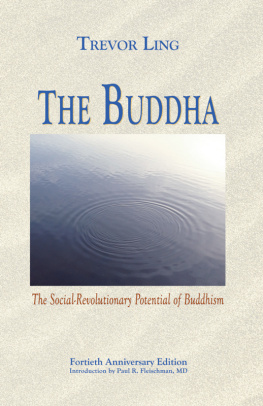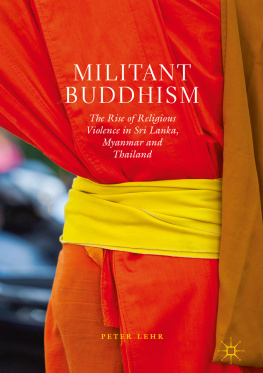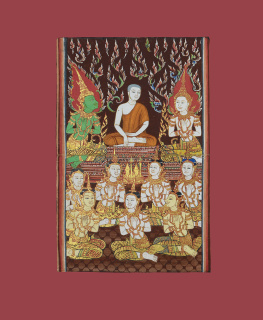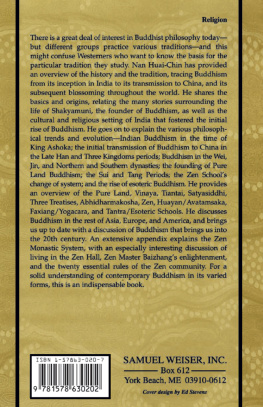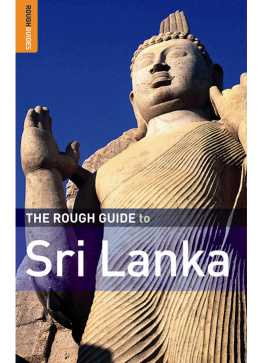

I have transliterated Pali (P.), Sanskrit (Sk.) and Sinhala (Sin.) texts according to standard scholarly conventions. The translations contained herein are either my own or as cited. For personal and geographical names, I have usually adopted the Pali version of the name along with diacritics. Some names, however, are more familiar in their Sanskrit/Sinhala form, such as Parkramabhu and Dabadeiya, and in these cases I follow common usage. The one exception is the Cla dynasty, which I refer to using the transliterated Tamil name. I do not transliterate terms such as nirvana and Theravada, which have entered the English lexicon.
I use the modern country name Sri Lanka primarily as a toponym designating the geographical island. Where I occasionally refer specifically to a political territory, however, I have opted to use the most common medieval name for the kingdom, namely, Lak, in order to distinguish the fluctuating territorial boundaries of kings during the period with the actual geographical boundaries of the island. On occasion I have also used the modern English name for a Southern Asian place, such as Kashmir rather than Kamra, where appropriate.
Wherever possible I cite primary source material with a page number and line number, with the line number indicated in subscript (e.g. 12). In general, whenever I directly quote and translate a passage from a primary source, I also provide the Pali, Sanskrit or Sinhala text in the endnotes of each chapter. If the texture of the original language itself is relevant to the topic of discussion, then I also quote it in the main text of the book too. In each chapter the titles of Pali, Sanskrit and Sinhala works are translated in the first instance of their use and, likewise, the regnal dates of each king or queen are cited when they are first mentioned.
I. Primary sources
Abhidhammatthasagaha of Anuruddha:
Saddhtissa, Hammalawa, ed. The Abhidhammatthasagaha of Bhadantcariya Anuruddha and the Abhidhammatthavibhvin-k of Bhadantcariya Sumagala. Oxford: Pali Text Society, 1989.
Abhidhammatthavibhvin of Sumagala:
See Abhidhammatthasagaha of Anuruddha.
Abhidhammvatra of Buddhadatta:
Buddhadatta, A.P., ed. Buddhadattas Manuals, Part 1: Abhidhammvatra and Rprpavibhga, Part 2: Vinayavinicchaya and Uttaravinicchaya. 1915, 1928. Combined reprint, London: Pali Text Society, 1980.
Abhidhammvatra of Buddhadatta Be:
Chahasagyana CD-ROM, Version 3.0. Igatpuri: Vipassana Research Institute, 1999.
Abhidhammvatraviksin of Sumagala I:
Abhidhammvatrapurak.Abhidhammvatrabhinavak. 2 vols. Rangoon: Buddhassana Samiti, 1961.
Abhidhammvatraviksin of Sumagala II:
See Abhidhammvatraviksin of Sumagala I.
Abhidhnappadpik of Moggallna:
Subhti, Waskauw, ed. and trans. Abhidhnappadpik; or, dictionary of the Pali language. By Moggallna Thero. Colombo: W. Henry Herbert, Acting Government Printer, 1865.
Abhidharmrthasagrahasannaya of Sriputta:
Siri Pannamoli Tissa, ed. Abhidharmrthasagraha vistara sannaya. Third edition, revised and edited. Ambalamgoa: Wijaya Printing Press, 1926.
Aguttara Nikya I:
Morris, Richard, ed. The Aguttara-Nikya, Part 1:Ekanipta, Dukanipta, and Tikanipta. 1885. Second edition, revised by A.K. Warder, London: Pali Text Society, 1961.
Aguttara Nikya IV:
Hardy, E., ed. The Aguttara-Nikya, Part 4:Sattaka-nipta, ahaka-nipta, and navaka-nipta. 1899. Reprint, London: Pali Text Society, 1958.
Apadna III:
Lilley, Mary E., ed. The Apadna, Parts 12. Oxford: Pali Text Society, 2000.
Adhyy of Pini:
Katre, Sumitra M., ed. and trans. Adhyy of Pini in Roman Transliteration. Austin: University of Texas Press, 1987.
Atthaslin:
Mller, Edward, ed. The Atthaslin: Buddhaghosas Commentary on the Dhammasagai. 1897. Revised edition, London: Pali Text Society, 1979.
Aucityavicracarc of Kemendra:
Rghavchrya, Vidyratna E.V.V. and D.G. Padhye, eds. Minor Works of Kemendra. Hyderabad: Sanskrit Academy Osmania University, 1961.
Blvabodhana of Kassapa:
Sri Seelaskhandha, C.A., ed. Balawa Bodhana, An Abridgement of Chandras Grammar by the most venerable Sri Mahakasyapa Sangharaja Mahasthavira of Jtawana Mahvihra, Polonnaruwa. Aluthgama: Saddharmaprakasa Press, 1924.
Blvatra of Dhammakitti:
Chahasagyana CD-ROM, Version 3.0. Igatpuri: Vipassana Research Institute, 1999.
Buddhaghosuppatti of Mahmagala:
Gray, James, ed. and trans. Buddhaghosuppatti or The History Romance of the Rise and Career of Buddhaghosa. London: Luzac, 1892.
Buddhippasdan of r Rhula:
Sri Dhirananda and Vachissara, eds. Buddhippasadani. A commentary on Padasadhana, Grammar of the Pali Language. By Sangharaja Sri Rahula, Principal of the College Srisanghabodhi-Srivijayabahu Parivena, Totagamuwa. Colombo: Vidyasagara Printing Works, 1908.
Caturrakkhadpan:
Chahasagyana CD-ROM, Version 3.0. Igatpuri: Vipassana Research Institute, 1999.
Cavasa:
Geiger, Wilhelm, ed. Clavasa: Being the most recent part of the Mahvasa, Volumes, 12. 1925, 1927. Combined reprint, London: Pali Text Society, 1980.
Daadpjvaliya:
Sugatapla, T., ed. Daadpjvaliya. Colombo: Vidydara Press, 1929.
Daadsirita of Devrada Dampasagin:
Rajasekhara, E.S., ed. Daad Sirita. Colombo: Granthaprakasa Press, 1920.
Dhvasa of Dhammakitti:
Morris, Richard and T.W. Rhys Davids, eds. The Dhvasa, Journal of the Pali Text Society (1884): 10951.
Dhvasasannaya:
sabha Tissa, ed. Dhvaso or The History of the Tooth Relic With its Sinhalese Paraphrase by cariya Dharmakrti Mah Terunnns of Pulastinagara A.B. 1762. Kelaniya: Sastradhara Press, 1883.
Dhammapadahakath I:
Norman, H.C., ed. The Commentary on the Dhammapada, Volume 1, Part 1. 1906. Reprint, London: Pali Text Society, 1970.
Dhammasagai:
Mller, Edward, ed. The Dhammasagai. 1885. Reprint, London: Pali Text Society, 1978.
Dhammasagai Be:
Chahasagyana CD-ROM, Version 3.0. Igatpuri: Vipassana Research Institute, 1999.
Dhammasagaianuk of Dhammapla:
See Dhammasagaimlak of nanda.
Dhammasagaimlak of nanda:
Abhidhammapiake Dhammasaga-ahakathya Atthavaanbht Bhadantcariya-nandattherena kat Dhammasagamlak. Tapassnuvaanbht Bhadantcariyadhammaplattherena kat Dhammasaga-anuk. Yangon: Ministry of Religious Affairs, 2008.



